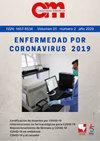Factors associated with stunted growth in children below 11 years of age in Antioquia, Colombia, 2004
IF 0.7
4区 医学
Q3 MEDICINE, GENERAL & INTERNAL
引用次数: 6
Abstract
Objective: To explore some factors associated to stunted growth in children below 11 years of age in the Department of Antioquia. Methodology: Cross-sectional study using the databases of alimentary and nutritional profiles in homes of Antioquia in 2004, based on a representative random sample of homes in the department (95% reliability and error margin of 3%). For this study, 100% of the records of children below 11 years of age were used. A model of generalized equations estimation was constructed for stunted growth classified by a Z score smaller than -2 standard deviation with respect to p 50 of the 1978 NCHS (Centro Nacional de Estadisticas de la Salud - National Center for Health Statistics). Data were analyzed using the GLIMMIX Procedure: SAS version 9.1. Results: We found 18.6% of the children with stunted growth, 75% of the homes with male head of household, 70% of heads of household with maximum 5 years of schooling; 47% of homes were nucleated bi-parental, and 40% extensive with a 5-member median per home; 56.4% poor per unsatisfied basic needs, and 80% in alimentary insecurity. The factors associated to stunted growth were: female gender, 1-5 years of age, head of household with less than 6 years of schooling, more than 5 people in the home, more than two household members under 7 years of age, coming from a poor home per unsatisfied basic needs, belonging to a sub-region different from Medellin, food availability of less than 30 different foods per week, no production of food, and head of household under 40 years of age. Conclusions: Herein, we show evidence of the magnitude of poverty and association of precarious socioeconomic conditions with stunted growth in Antioquia. The study shows the importance of considerin2004年哥伦比亚安蒂奥基亚11岁以下儿童发育迟缓的相关因素
目的:探讨安蒂奥基亚省11岁以下儿童发育迟缓的相关因素。方法:利用2004年安蒂奥基亚州家庭的营养和营养资料数据库进行横断面研究,基于该部门有代表性的随机抽样家庭(95%的可靠性和3%的误差范围)。在这项研究中,100%使用了11岁以下儿童的记录。建立了一个广义方程估计模型,以相对于1978年国家卫生统计中心(Centro Nacional de Estadisticas de la Salud - National Center for Health Statistics)的p 50小于-2标准差的Z分值对发育迟缓进行分类。数据分析采用GLIMMIX程序:SAS version 9.1。结果:18.6%的儿童发育不良,75%的家庭户主为男性,70%的家庭户主受教育年限不超过5年;47%的家庭是双亲家庭,40%的家庭中位数为5人;56.4%的人基本需求未得到满足,80%的人缺乏营养。与发育迟缓相关的因素有:女性、1-5岁、户主受教育程度低于6年、家中有5人以上、7岁以下家庭成员超过2人、来自基本需求未得到满足的贫困家庭、属于与麦德林不同的分区域、每周可获得的食物少于30种、不生产食物、户主年龄低于40岁。结论:在此,我们展示了安蒂奥基亚的贫困程度和不稳定的社会经济条件与发育迟缓的关联的证据。这项研究表明了考虑的重要性
本文章由计算机程序翻译,如有差异,请以英文原文为准。
求助全文
约1分钟内获得全文
求助全文
来源期刊

Colombia Medica
MEDICINE, GENERAL & INTERNAL-
CiteScore
2.00
自引率
0.00%
发文量
11
审稿时长
>12 weeks
期刊介绍:
Colombia Médica is an international peer-reviewed medical journal that will consider any original contribution that advances or illuminates medical science or practice, or that educates to the journal''s’ readers.The journal is owned by a non-profit organization, Universidad del Valle, and serves the scientific community strictly following the International Committee of Medical Journal Editors (ICMJE) and the World Association of Medical Editors (WAME) recommendations of policies on publication ethics policies for medical journals.
Colombia Médica publishes original research articles, viewpoints and reviews in all areas of medical science and clinical practice. However, Colombia Médica gives the highest priority to papers on general and internal medicine, public health and primary health care.
 求助内容:
求助内容: 应助结果提醒方式:
应助结果提醒方式:


